Marin Leggat
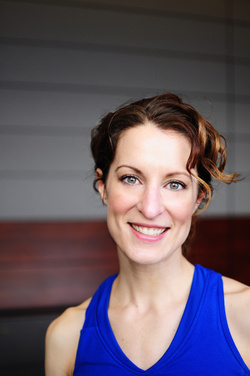
How did you become involved as a dancer and a dance artist?
I grew up doing ballet, jazz, and tap like most girls did, and when I was in high school I had a teacher who introduced me to modern dance. I went to Hillcrest High School in Midvale, Utah, and my teacher’s name was Robyn Mousley. She introduced me to modern dance, and I was just kind of converted right away.
Why did you start M.E.L.D. Danceworks?
In grad school I was really interested in the relationship between spiritual practices and creative processes—that’s what my thesis was about.
When I was in grad school, or maybe a couple of years earlier, there was a conflict going on in Salt Lake when the Church bought Main Street.
I remember feeling for the first time a really clear division between those who are Mormon in Utah, and those who are not Mormon in Utah.
I remember wishing that there was something that could be done to bring people of different religious backgrounds together in some sort of common experience or common purpose. That specific event in Salt Lake sparked a desire to use dance and the arts as a way to bring diverse people together.
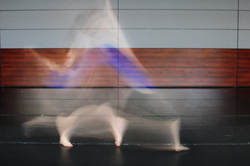
When I moved to New York, I just felt like it was the time and place to really try to start moving this mission forward. And what a better place to do it in than New York City? So I created this dance company in 2006.
What is the mission of M.E.L.D. Danceworks and how does it influence your work as an artist?
The mission of M.E.L.D. Danceworks is to “dissolve religious and cultural differences through the art of dance.” Whether I’m choreographing as the artistic director of M.E.L.D. Danceworks or as a commissioned choreographer for some other group, organization, or university, those are the things that I’m interested in exploring right now through dance.
I would say that everything I’m doing right now, in some way or other, reflects that desire to not only get issues of religious involvement out in the open so we can talk about and celebrate them together, but also to give dance artists the opportunity to express and embody things that are of most importance to them: their religious and spiritual beliefs.
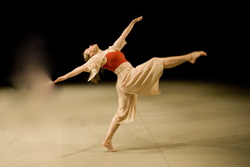
What inspired your Foundations piece?
The first dance I had done in New York was a piece called Sydney Ann’s Apple, and it was an exploration and celebration of the creative spirit of women. It was performed in the Merce Cunningham studio in 2007. In that piece, I explored the themes of creation and womanhood through my own perspective as an LDS woman.
After that project was over, I wanted to honor the experiences of other dancers that may see their world differently than I do. So, I started thinking about a project I could do that would use dancers of various religious and spiritual backgrounds.
Then, in 2008, I took a two-week workshop from Liz Lerman in Washington, D.C. Her whole message and process involved bringing people of different backgrounds together and honoring their experiences. I felt like I really learned a lot from her about how I may be able to create a dance like this in New York City.
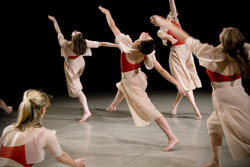
What were the technical aspects of pulling this piece together?
I held an audition in New York, and I was very clear about what my intention was and what the dancers would be asked to contribute in terms of being really open with their spirituality and honoring the different perspectives of other dancers. We held rehearsals once or twice a week for about six months before we started to perform Foundations. It was a dance that formed based on what the dancers brought to the process.
I had no preconceived ideas or agendas going into this project, and it was only once we got into it and listened to the dancers’ stories, moved together, and discussed various topics together that the shape and the arc of the piece started to reveal itself. It was a really unique process. Really fulfilling I think, for everyone involved.
In rehearsals we did a lot of different things: we talked a lot, we wrote a lot, and we moved a lot. I’d come to rehearsal sometimes with a specific question; one of the questions was, “What do I stand on?” We were talking about literal foundations—physical foundations, and then we were also talking about spiritual foundations. So that was one question that they responded to and created movements based on: “I stand on…” fill in the blank.
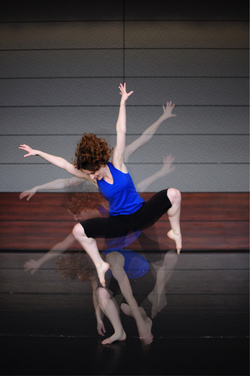
The dancers created movement phrases to reflect the various things that they “stand on.” The final section of the piece is sort of a collection or amalgamation of all these different phrases; the dancers are dancing them in unison, while each of them is speaking aloud these statements of belief that they stand on.
One thing that I really love about the piece is the section where the dancers share passages of sacred texts that talk about foundation and building. In New York we had a chapter of second Kings that was recited by a Jewish dancer, talking about the building of King Solomon’s temple. We had a Buddhist chant that was recited. We had passages of scripture from the Doctrine and Covenants. There’s something that’s really beautiful, I think, about involving sacred texts from various religious traditions.
I’m actually resetting Foundations here at BYU, this semester. It’s a similar process, but it’s different because I’m working with sixteen LDS dancers. This time around, the dance is completely different because it involves a different set of dancers’ beliefs. It’s a reflection of this particular group.
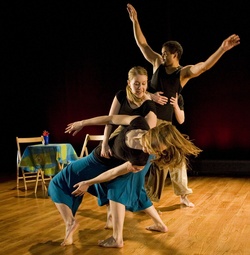
Here at BYU, the sacred texts are all coming from the Book of Mormon, so there’s not quite as much diversity, but still, each dancer has their own unique journey that they’ve taken and their own experiences that have served as the foundation of their testimony.
What was it like to work so openly with the NYC dancers concerning their religious or spiritual beliefs?
Rehearsals became a really safe environment where dancers were able to share really, really sacred experiences. We were able to share trials, and dancers were able to talk about questions they have about their own faith and really receive a lot of compassion and support from dancers of different religious backgrounds. That was such a beautiful thing—I just loved that.
I really feel that the community that we created as dancers—the trust that we created among ourselves—was translated through our performances to our audiences. Audiences really responded positively to what they saw and what they felt. That was the most rewarding part to me.
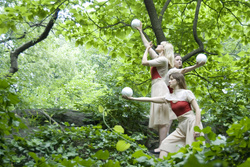
You performed Foundations in several different venues throughout the city. What did your audiences know about the dancers or M.E.L.D. Danceworks?
We performed our first performance at the stake arts festival that our stake put on in May of last year. We did a couple of performances for the Jewish community, but they didn’t necessarily have any personal connection to our Jewish dancer. We did a performance for an arts festival that wasn’t a religious festival, but was just a community arts festival up in northern Manhattan. Some people knew about us, but most people didn’t really know who we were or what we were about.
Tell us about the work you did with the Terence Lewis Contemporary Dance Company in India during the summer of 2008.
Terence and I met in 2005. We were both in Sri Lanka volunteering with post-tsunami arts activities going on there. We crossed paths for about two days, and I felt at that time that I needed to maintain contact with Terence.
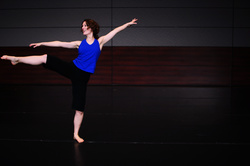
We communicated over the next two or three years before we decided to try to pursue the funding necessary to allow me to work with his company. Terence has a young contemporary dance company in Mumbai and was interested in exposing them to contemporary dance artists from different parts of the world.
We approached the US consulate in Mumbai and were able to get funding through the state department for me to take an assistant, Rebecca Jennejohn, and spend four weeks there choreographing a thirty-minute dance for his company, and teaching daily technique and composition classes.
I was the one who approached Terence with this project, and said, “This is the project I would be interested in…” or “These are the themes that I would be interested in exploring with your company.”
Those themes involved spiritual traditions and religious background, and I was excited to work with a group of non-western, non-Christian dancers.
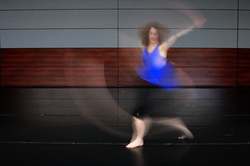
Did you find this project challenging coming from your Mormon background?
Those dancers were Hindu, Muslim, Jane, Zoroastrian, and Christian (i.e. Catholic). They really were a very diverse group. Because the dancers were so young, as well, we had to make defining a “spiritual experience” a really broad investigation for them. We would talk about what is most important to them in their lives.
I remember feeling prompted, really, to teach these dancers about the principles of faith; we talked about faith as a general principle, but I asked them the question, “What is something that you know to be real, even though you cannot see it?” They connected to that idea in a lot of different ways. I just really wanted to give these dancers an opportunity to come experience and embody ideas that were deeper than the flashy style of dancing their area is typically known for.
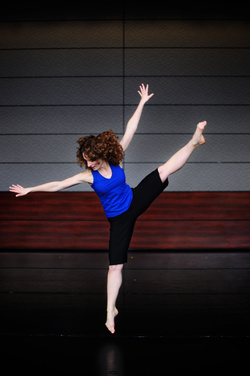
How did the mission of M.E.L.D. Danceworks come across in your daily work in India?
Oh boy, that’s a good question. Part of me kind of thinks, well, technique is technique. But I also think there’s something important about honoring individual dancers—honoring their learning process or their experience—as well as creating a learning environment that’s not so teacher-directed.
Even though we’re doing pliés, tendus, leg swings, and leaps across the floor, I’m always interested in bringing it back to “What does this mean for you individually? How does this relate to your life?” Addressing those larger life questions, I guess. That’s what all modern dance teachers do.
Describe a typical day working with the dancers.
When all was said and done, it was about five hours a day. The first couple of hours focused on technique and/or improvisation composition. Sometimes what we experienced in technique and improvisation composition would then translate into something I was trying to generate with them for the final dance. Then we’d work with them for three hours or so in the afternoon. Sometimes at night I’d work with some of the younger students. Rebecca would teach Pilates; we’d do different things like that.

The final creative project you did with the Terence Lewis Contemporary Dance Company was a piece called Light Traces, which had several sections. Can you talk specifically about a few of these sections and how they related to your mission at MELD Danceworks and/or the project you presented to Terence?
Sure. The second section was one of my favorite sections. It was the most chaotic section, but it was a section where each of the dancers created a solo—a small movement phrase that reflected their feelings about faith, “faith” meaning something they believed to be real even though they can’t see it, as I mentioned before.
Each of these dancers created beautiful movement phrases, then I simply crafted them on stage: entrances and exits and groupings layering on top of each other. I loved that section. I thought the dancers were so committed because it was their own experience that they were embodying on stage. It was their belief and their ideas, and I think it’s so beautiful when people have the opportunity to be creative and expressive that way. So the second section was always my favorite.
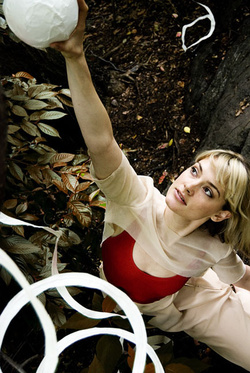
We used light as a metaphor for those things that we were searching for and things that we may not be able to see but that we know exist. There was a section in which the dancers held flashlights and sort of shined them into the darkness and shined them across the surfaces of their bodies. The final section had a huge kind of a center light that the dancers were all dancing around and moving in and out of.
The final image of the dance was of all twenty-six dancers looking at the light and walking around it, and that walk sped up into a run until they were all sprinting, sprinting around this center light as the curtains went down.
I thought it was a beautifully lit piece; the light was one of my favorite parts about it.
Tell us about the intersection of faith and art in your work and your everyday life.
One thing I’ve always believed in very strongly—sort of the root and basis of my testimony—is that creativity is an eternal principle. As members of the Church we have hope in the promise of being able to create eternally as gods and goddesses, don’t we?
That’s what draws me to dance. And that’s why I’m LDS. This gospel celebrates creation, and we recognize that creating is a Godly attribute. Everyone comes closer to Heavenly Father in their own way. For me, it’s been through making dances.
What a blessing it is to create anything: a dance, a lasting friendship, or especially, to create life. Everyone is endowed with this heavenly gift. We are all creators! ❧
